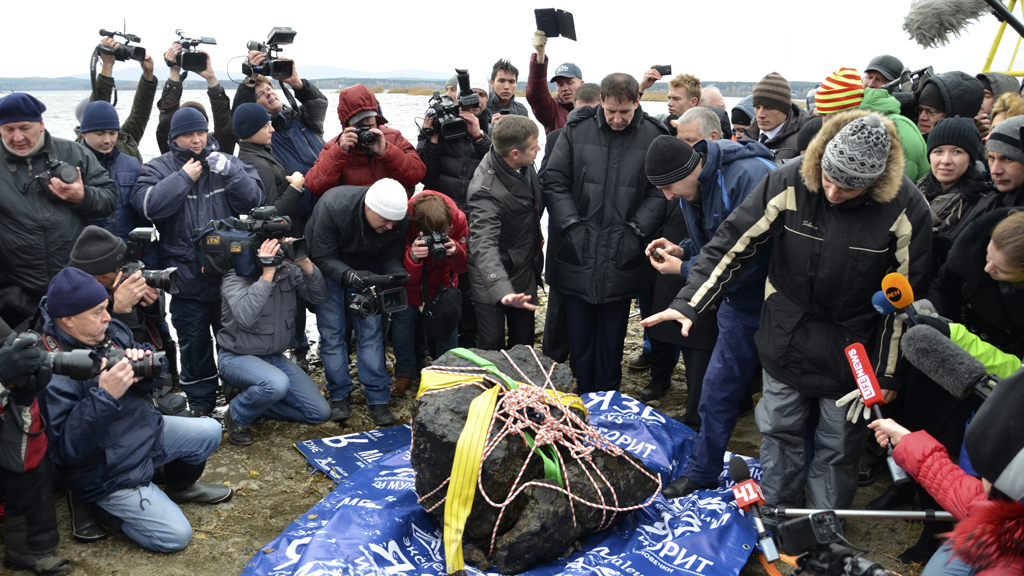Huge meteorite chunk lifted from Russian lake
Russian scientists dive to the bottom of a lake to recover a massive chunk of the meteorite that detonated over the Chelyabinsk region in February.

The fragment, weighing in excess of 570kg, will rank among the largest meteorite fragments ever found.
As the team lifted the rock to weigh it, it broke into three large pieces, before breaking the weighing scales themselves.
The meteorite detonated in the atmosphere on Febraury 15 causing a blast 20 or 30 times more powerful than the Hiroshima nuclear bomb and blew in windows and damaged buildings and sent more than a thousand people to hospital.
Scientists knew the chances of finding a big piece of the meteor in the lake were high. Something punched a six metre hole in the ice immediately after the detonation. But to find a piece of metorite this large has got astronomers excited.
The meteor’s detonation threw debris everywhere so small pieces of it are common. “There’s bucket loads of it,” said Professor Alan Fitzsimmons at Queens University Belfast. “I’ve got a piece in my desk drawer.”
Rare find for scientists
But to find a piece this big “is incredibly rare,” he said.
Space rocks rarely survive the friction of the earth’s atmosphere – it’s thought only around a thousandth of the 10,000 tonne Chelyabinsk meteor survived its journey though the atmosphere before it detonated.
The larger the piece of meteorite, the more it can teach astronomers.
Based on analysis of small fragments, researchers know the Chelyabinsk meteorite is from the inner asteroid belt – the one that rings the inner planets of the solar system. Rocks from there are about 4.5 billion years old – the same age as our planetary neighbourhood.
But there are some intriguing details about the Chelyabinsk.
Different eras of the solar system
“It suffered some kind of impact during the history of the solar system,” said Prof Fitzsimmons. “There’s evidence it was heated and cooled.”
The theory is that the meteorite could contain an amalgamation of pieces of rock from different eras of the solar system.
While astronomers know quite a bit about large asteroids which they can see through telescopes, smaller lumps of space rock of the size that gave rise to the Chelyabinsk fragment are a “scientific bonanza”.
It could give completely new insights into the nature of these smaller asteroids that can tell us more about the origins of the solar system.
Researchers hope that the asteroid will stay in the hands of Russian research insitutions, so it can be shared and studied by experts.
Many other fragments have ended up for sale.
A resident of Chelaybinsk is trying to sell a 3.4kg piece of meteorite for 2.1m roubles (£41,000), according to Russia Daily.
Based on the current market price the new piece could easily fetch £5m.
-
Latest news
-
As India goes to the polls in the world’s largest election – what do British-Indians think?6m

-
Tees Valley: Meet the candidates in one of the biggest contests coming up in May’s local elections4m

-
Keir Starmer says public sector reform will be a struggle7m

-
Nicola Sturgeon’s husband Peter Murrell charged with embezzlement of funds from SNP1m

-
Ukraine might finally get $60billion in American weapons and assistance to defend against Russia3m

-




